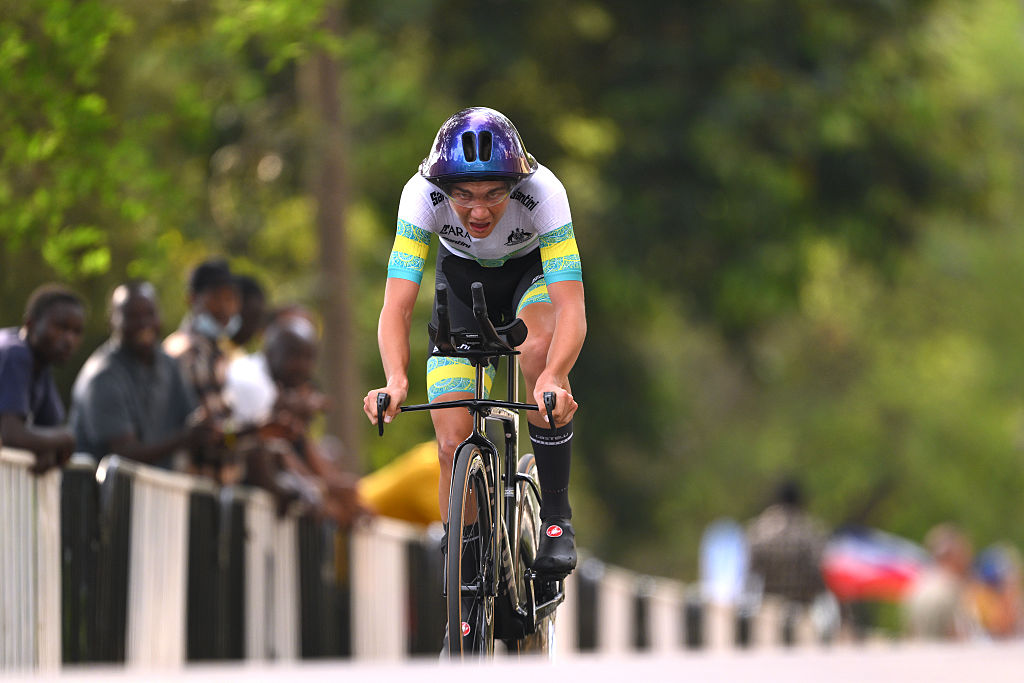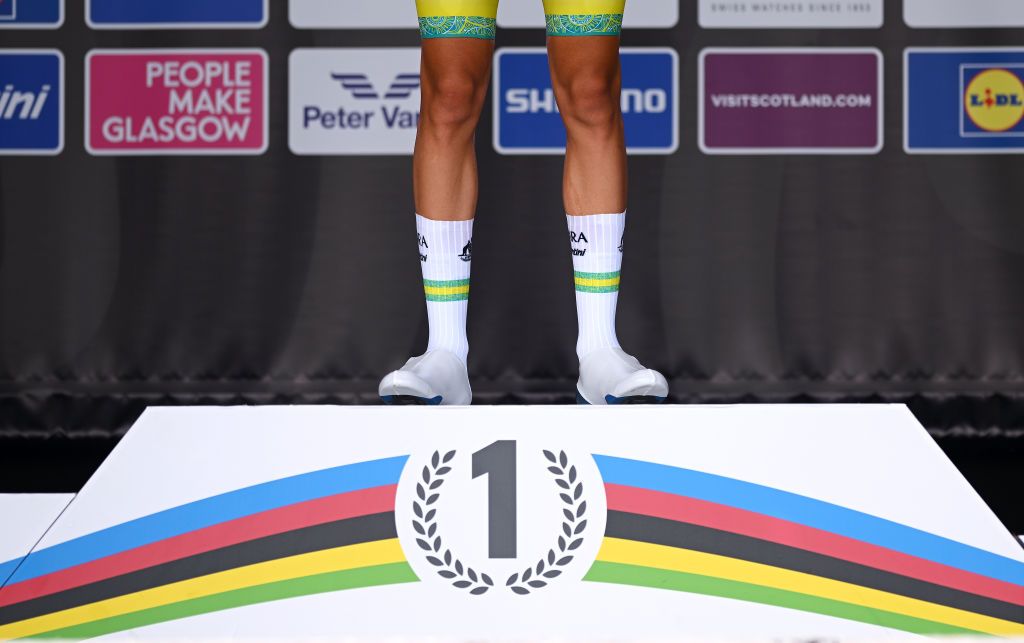With an Olympic Games to be hosted by Australia in just seven years and the professional ranks of road racing increasingly leaning toward younger and younger riders, the importance of getting the pathway right for developing young riders from the nation couldn’t be clearer, so it’s not surprising that AusCycling decided it was time to run the ruler over its junior selection pathway.
CEO Marne Fechner said queries were being raised at an organisational level, by parents, community and coaches about issues from how the system stacks up against others to why more athletes weren’t being taken away to compete.
You may like
To guide the process, AusCycling appointed Chelsea Warr, who has wide ranging experience in both the British and Australian high performance space, delivered a report that identified 10 “considerations” which included defining and communicating a clearer pathway strategy with embedded rider development and selection principles, improved communication of selection criteria, minimum performance standards, integration of the development and selection process, a separation of the policy for Olympic and non-Olympic disciplines – which according to the report “feel undeserved and overlooked by the current policy” – and unlocking sponsorship, philanthropy and partnerships to help with resourcing.
One of the hurdles is that government funding for high performance in Australia – the federation’s largest source of money – is focused on Olympic and Paralympic sports, with that funding which comes from the Australian Sports Commission, an allocation of $14,643,022 in the 2024/25 financial year, largely tied to medal prospects. Still, AusCycling represents a number of disciplines that fall outside that realm, and there are also many more events where the national federation is expected to step in.
You may like

Max Goold riding to tenth in the men’s Junior Individual Time Trial at the 2025 Road World Championships in Rwanda (Image credit: Getty Images)
Road World Championships are certainly just one part of the puzzle, with a range of opportunities supported including junior development camps, but to use the event which is currently underway as an example, AusCycling said it funds a range of significant expenses to enable all its athletes to compete, which include staff, clothing costs and distribution, compliance requirements, administration and logistics that are generally not charged to athletes.
There are then levies to cover the costs directly associated with their participation, from flights to accommodation and meals, and while AusCycling’s contribution to these for elite athletes was 100%, the cover was reduced to 50% for U23 riders and for the junior riders there is none, and U19s have also been asked to pay a small component of staff costs.
Australia is certainly not alone when it comes to finding resource constraints an issue that can leave funding lacking to cover the costs of junior riders’ participation, with Megan Jastrab, for example, putting together a fundraiser to help assist junior women make it to the Road World Championships in Rwanda and Denmark deciding not to send either U23 or Junior riders.
The realities for a nation where most junior riders are half a world away from key international competition are that there is very little that can be accessed without a considerable outlay, by either the rider or the federation.
“One of the areas of focus that will be out of the review is, how do we think creatively around setting up foundations?” said Fechner. “What are the other options that we can bring more resource into the organisation that would offset and support athletes – whether in junior pathways, Olympic or non-Olympic or Paralympic – that are currently funding their participation in the sport?”
There were plenty of areas for improvement identified, which pinpointed a “flag on the hill”, but Fechner also said it was still working through the process of articulating “what dies great actually look like”.
“There are a few things in there that are going to be really interesting and challenging for us to look at, because it still fundamentally doesn’t necessarily address the resources in the system, and we have a big family,” said Fecner.
“So how do we actually be really clear and transparent about what we are doing and not doing? How do we make sure that our policies and programs and practices and the pathway, the actual pathway itself, is really crystal clear for everyone? We definitely don’t have all of the answers yet, but we’ve got a very clear roadmap for how we’re going to enhance and improve our system and and you know, we want to give it a red hot crack. But we also understand there’s cynicism in the system, and the proof will be what we deliver.”
Findings
Define and communicate a clearer, visible, and 2032+ focused Pathway StrategyDefine and embed rider development and selection principles that guide all key development activitiesUplift communication and education of selection policy and criteriaDefine minimum performance standards for World Junior selectionIntegrating selection and development – squad-to-team approachA tiered selection approach to balance performance and future pathway depthStrengthening junior selection panels and feedback loopsHarnessing volunteer expertise to support WJC campaignsSeparate Olympic and Non-Olympic PolicyResourcing WJC’s – unlocking sponsorship, philanthropy and partnerships

